python系列:[3]如何定义不定参数函数
来源:网络收集 点击: 时间:2024-04-30元组形式:
1、定义函数
def test1(*args):
print(################test1################)
print(type(args))
print(args)
2、调用函数
正确调用:
test1(1, 2) #args在函数体内部为tuple类型
错误调用:
test1(1, b=2) #TypeError: test1() got an unexpected keyword argument b
test1(a=1, b=2) #TypeError: test1() got an unexpected keyword argument a
test1(a=1, 2) #TypeError: test1() got an unexpected keyword argument a
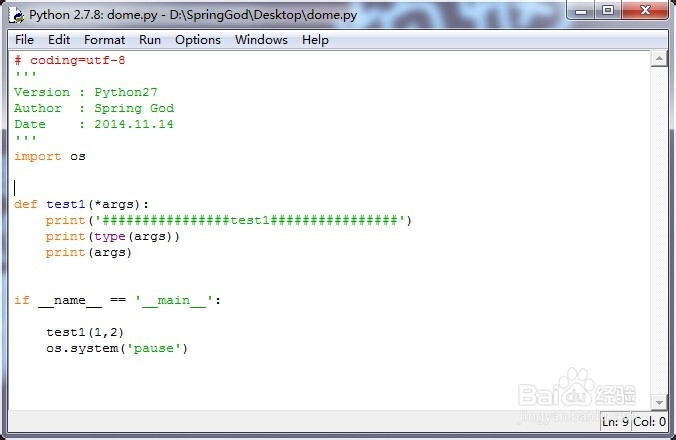
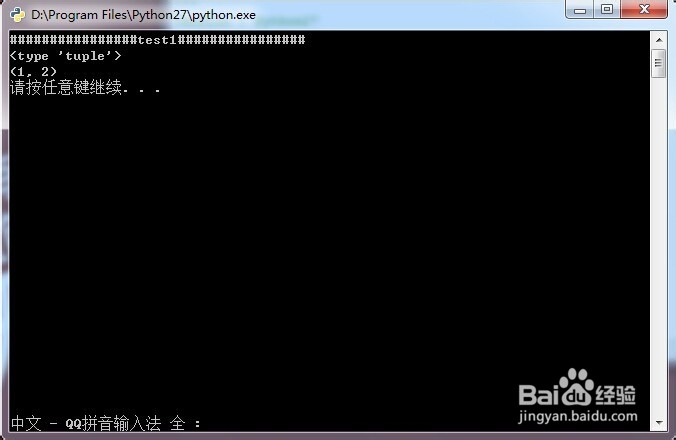 2/6
2/6字典形式:
1、定义函数
def test2(**kargs):
print(################test2################)
print(type(kargs))
print(kargs)
2、调用函数
正确调用:
test2(a=1, b=2) #kargs在函数体内部为dict类型
错误调用:
test2(1, 2) #TypeError: test2() takes exactly 0 arguments (2 given)
test2(1, b=2) #TypeError: test2() takes exactly 0 arguments (2 given)
test2(a=1, 2) #SyntaxError: non-keyword arg after keyword arg
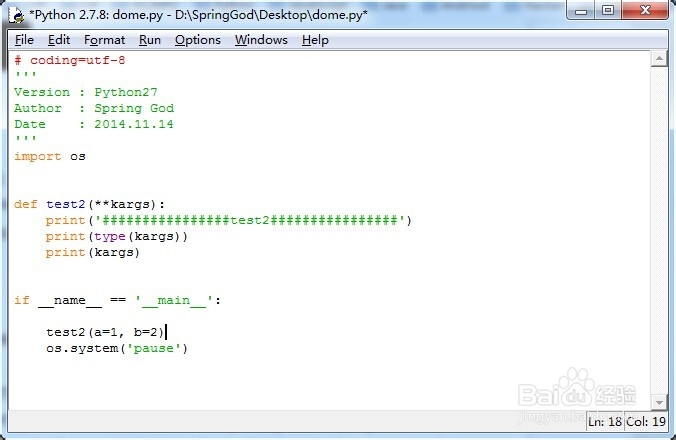
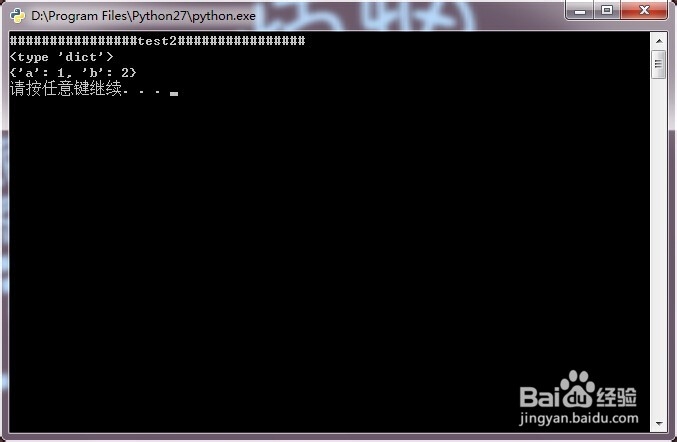 3/6
3/6混合形式:
1、定义函数
def test3(*args, **kargs):
print(################test3################)
print(type(args))
print(args)
print(type(kargs))
print(kargs)
2、调用函数
正确调用:
test3(1, 2) #args在函数体内部为tuple类型,kargs为空dict类型
test3(1, b=2) #args在函数体内部为tuple类型,kargs为dict类型
test3(a=1, b=2) #args在函数体内部为空tuple类型,kargs为dict类型
错误调用:
test3(a=1, 2) #SyntaxError: non-keyword arg after keyword arg
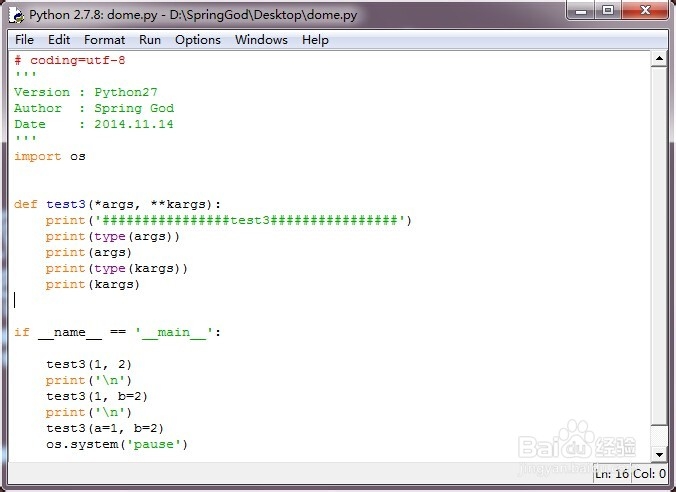
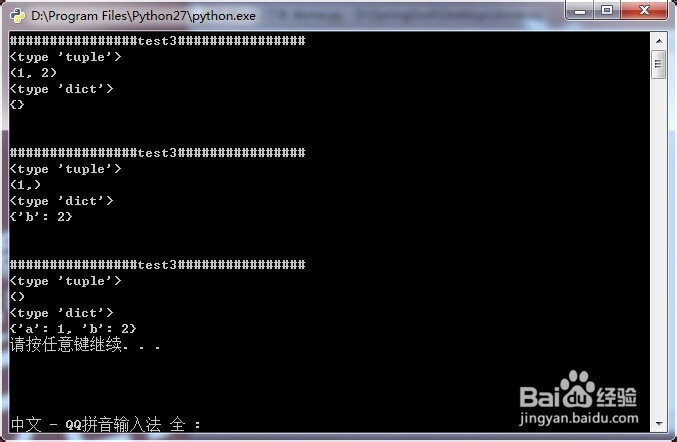 4/6
4/6其他形式1:
1、定义函数
def test4(a = ()):
print(################test4################)
print(type(a))
print(a)
2、调用函数
正确调用:
test4((1, 2)) #a在函数体内部为tuple类型
test4(a=(1, 2)) #a在函数体内部为tuple类型
test4((1,)) #a在函数体内部为tuple类型
test4(a=(1,)) #a在函数体内部为tuple类型
test4((1)) #a在函数体内部为int类型,非tuple类型
test4(a=(1)) #a在函数体内部为int类型,非tuple类型
test4(1) #a在函数体内部为int类型,非tuple类型
test4(a=1) #a在函数体内部为int类型,非tuple类型
错误调用:
test4(1, 2) #TypeError: test4() takes at most 1 argument (2 given)
test4(1, b=2) #TypeError: test4() got an unexpected keyword argument b
test4(a=1, b=2) #TypeError: test4() got an unexpected keyword argument b
5/6其他形式2:
1、定义函数
def test5(b = {}):
print(################test5################)
print(type(b))
print(b)
2、调用函数
正确调用:
test5({a:2}) #b在函数体内部为dict类型
test5(b={a:2})
test5({a:2,b:3})#b在函数体内部为dict类型
test5(b={a:2,b:3})
test5(b=2) #b在函数体内部为int类型,非dict类型
错误调用:
test5(a=1, b=2) #TypeError: test5() got an unexpected keyword argument a
test5(1, 2) #TypeError: test5() takes at most 1 argument (2 given)
test5(1, b=2) #TypeError: test5() got multiple values for keyword argument b
6/6其他形式3:
1、定义函数
def test6(a = (), b = {}):
print(################test6################)
print(type(a))
print(a)
print(type(b))
print(b)
2、调用函数
正确调用:
test6(1, 2)
test6(a=1, b=2)
test6(a=1, b=2)
test6((1, 2), {c:8})
test6({c:8})
test6(b={c:8})
test6((1, 2), b=2)
test6((1, 2), b=2)
错误调用:
test6(a=1, 2) #SyntaxError: non-keyword arg after keyword arg
test6(1, 2, b=2) #TypeError: test6() got multiple values for keyword argument b
注意事项本篇经验系本人依照真实经历原创,未经许可,谢绝转载
python版权声明:
1、本文系转载,版权归原作者所有,旨在传递信息,不代表看本站的观点和立场。
2、本站仅提供信息发布平台,不承担相关法律责任。
3、若侵犯您的版权或隐私,请联系本站管理员删除。
4、文章链接:http://www.1haoku.cn/art_633921.html
 订阅
订阅